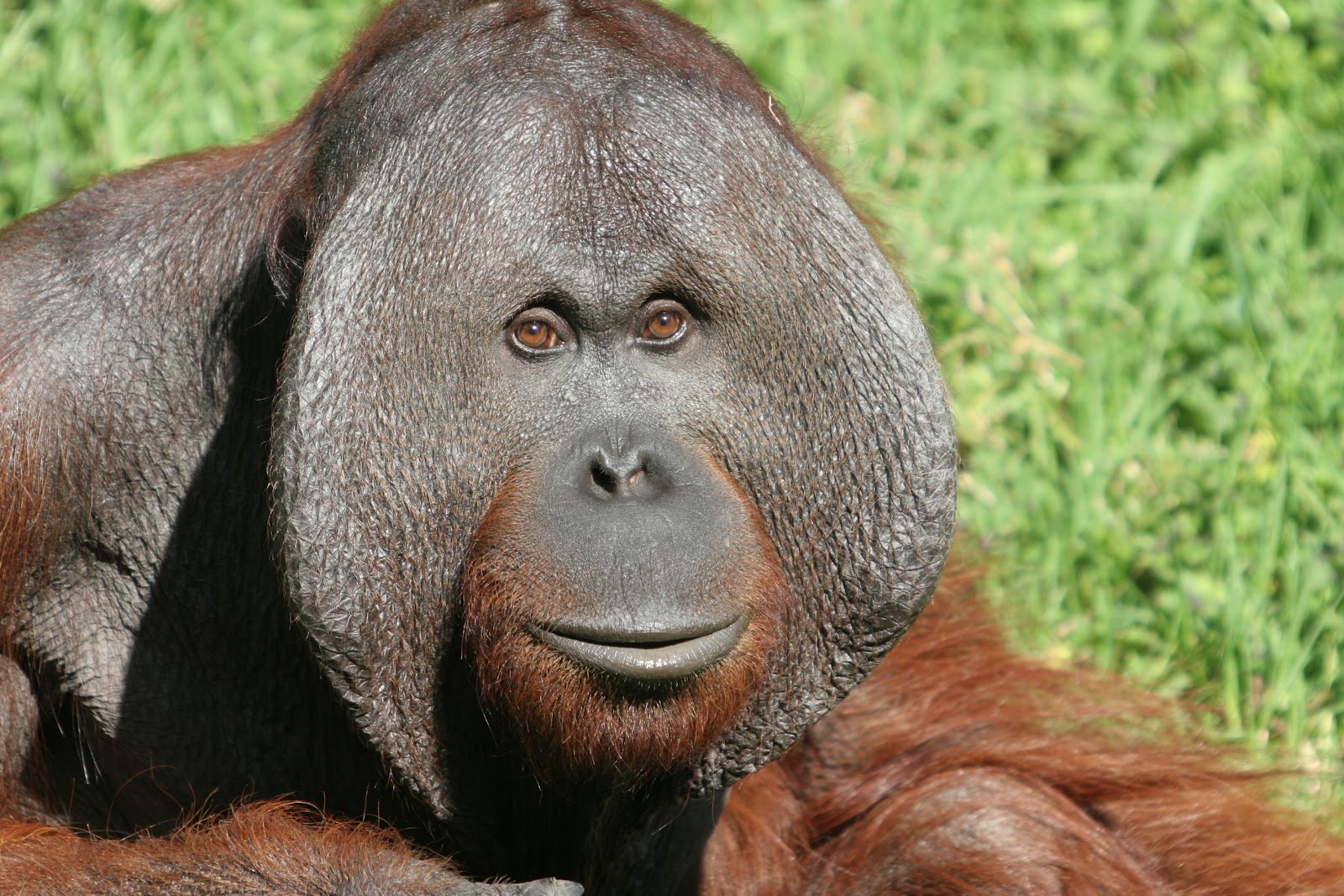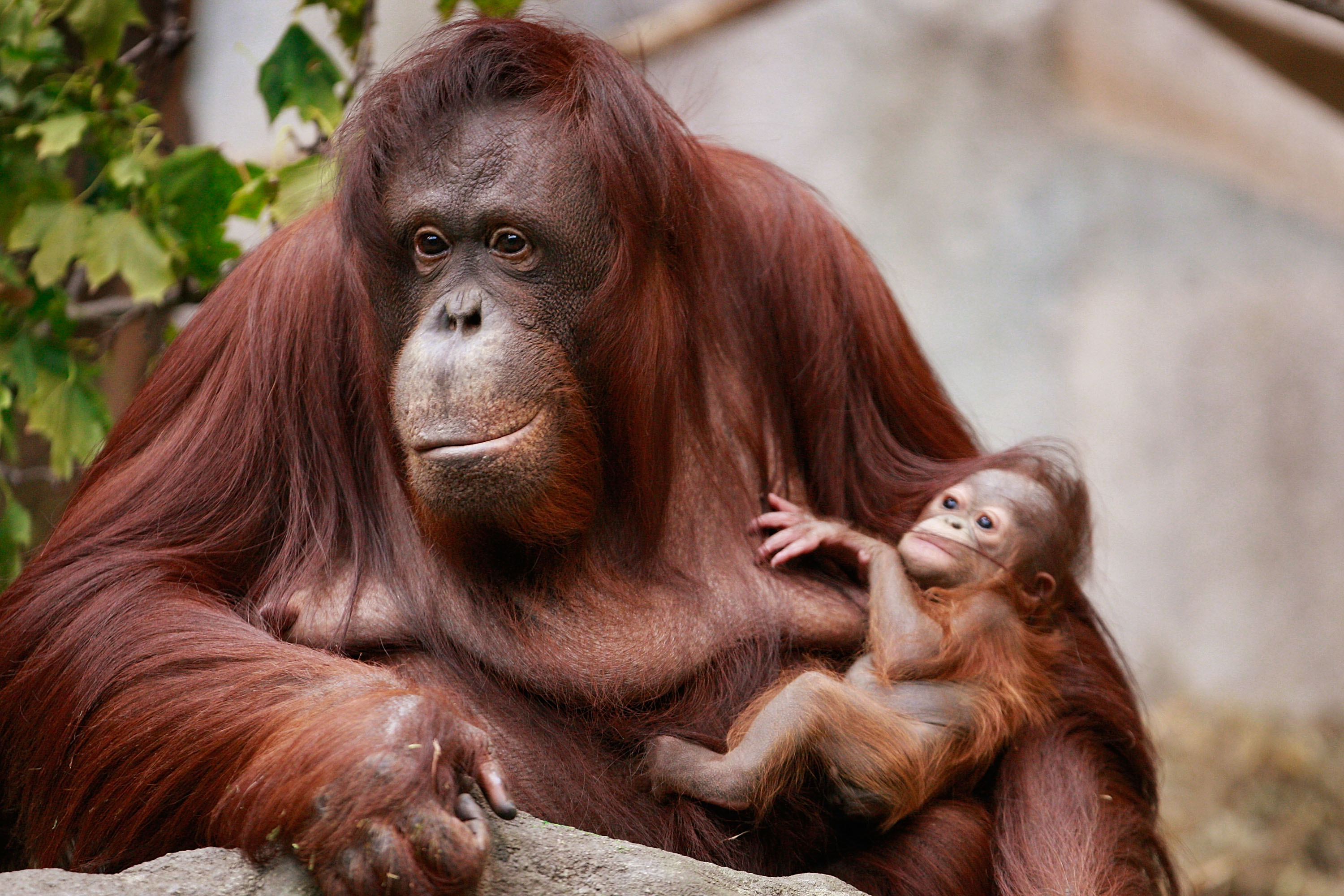Bornean orangutan
Bornean Orang -utan ( Pongo pygmaeus )
The Borneo Orangutan ( Pongo pygmaeus ) is a great ape. Together with the Sumatran orangutan, it forms the genus of orangutans. It is endemic to Borneo.
Features
Bornean orangutans share with their Sumatran relatives the adapted to a tree-dwelling lifestyle Build: the arms are very long, hands hook-shaped, localized, the thumb short and close to the wrist, the legs are short and maneuverable, the feet hand-like. However, they are somewhat stocky built and heavier than the Sumatran orang- utans. Other differences lie in the longer fur that is darker and browner, and the Backenwülsten especially older males: These grow outward and are nearly hairless. In addition, the beard is usually shorter and the throat pouch of the older males larger. With up to 90 kg, the males are significantly heavier than females, reaching up to 50 kilograms.
Way of life
Borneo Orangutans are diurnal forest dwellers, for the night they build a nest leaves, which is typically used only once. They climb slowly with all four limbs or swing on the branches. In particular, males also undertake forays on the ground - significantly more than their Sumatran relatives, which might be due to the lack of tigers on Borneo.
They are usually to be found and solitary than the Sumatran orang- utans alone. Males and females trying to establish fixed territories, particularly younger animals spend their lives but as a "wanderer " who constantly roam without grounds. Tool use is significantly less than their Sumatran relatives with them.
Bornean orangutans are herbivores that feed primarily on fruits, but also of leaves, young shoots and bark.
Threat and protection
The Bornean orangutan is one of the endangered species. The main reason is the loss of its habitat: The forests are used for timber production or for the establishment of agricultural land (such as for palm oil) cleared to a great extent. Its distribution area is therefore greatly reduced and fragmented. In addition, the hunting and the illegal trade in young animals that are kept as pets. These factors are exacerbated by the slow rate of reproduction of animals: Then bring a female only every four to eight years, one young world.
Overall, the species is still more common than the Sumatran orangutan. Estimates of the total stock are difficult and rich 15000-44000 animals. The IUCN lists the species as endangered ( endangered ).
The Borneo Orangutan Survival Foundation, shortly BOS, maintains two reintroduction centers, Wanariset in Eastern and Nyaru Menteng in Central Kalimantan on Borneo, as well as the reforestation project Samboja Lestari, in the near-natural forest as a habitat for up to 2,000 orangutans and other native Borneo species to be built. Other protected areas and centers are located among others in the National Park Gunung Palung, Tanjung Puting and Kutai (all Indonesian part ) and in the Sepilok Rehabilitation Centre in Sandakan and the Danum Valley Conservation Area in Malaysia. In the 1990s, 350 orangutans were released into the reserve of the Meratus of the Borneo Orangutan Survival Foundation. There, operate the organizations for nature fans, fascination rainforest eV. / Ulmer initiative to save the orangutans and the Borneo Orangutan Help a joint conservation project.
System
While in the past the two orangutan populations from Sumatra and Borneo summarized as subspecies of a species, they are now regarded as two separate species due to differences in physique and lifestyle. The Bornean orangutan is divided into two or three subspecies: Pongo pygmaeus pygmaeus in the northwest of the island, P. p. morio in the northeast and east ( this subspecies is, however, sometimes combined with pygmaeus ) and P. p. wurmbii in the southwest. The subspecies differ in skull structure.









